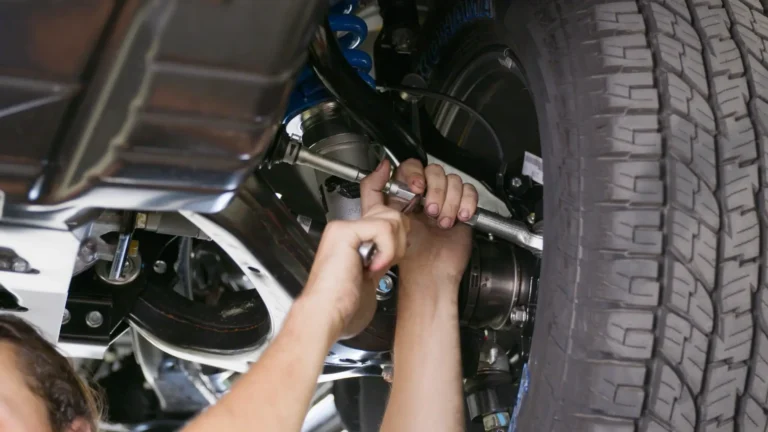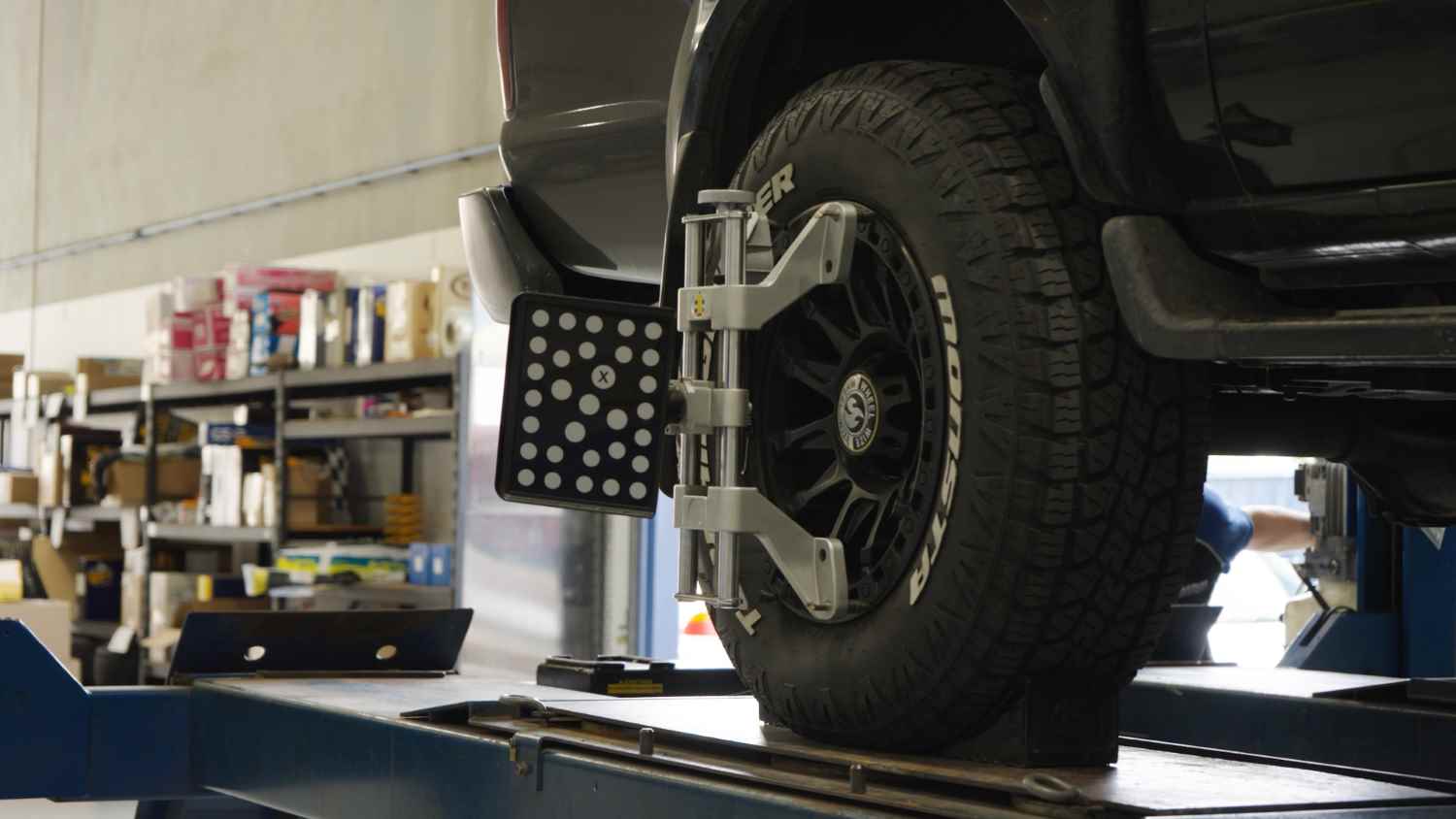The hidden cost of towing: Why your 4WD needs a wheel alignment




We spend a fortune on our caravans. We obsess over ball weights, GVM upgrades, and whether or not we packed the good camp chairs. However, there is one piece of maintenance on the tow-tug that often gets completely overlooked until it’s too late: the 4WD wheel alignment.
If you’ve ever wrestled your steering wheel for six hours straight on the highway, or noticed your front tyres are bald on the inside edge halfway through a Big Lap, you know exactly what I’m talking about. Ignoring your alignment doesn’t just make the drive exhausting; it burns fuel and destroys tyres. And let’s be honest, tyres aren’t cheap these days.
Here is why getting a proper 4WD wheel alignment is critical (especially if you tow), and why the “she’ll be right” approach could cost you big time.
Most people think an alignment is a “set and forget” job. However, the moment you hitch 2.5 tonnes of caravan to the back of your 4WD, the geometry changes. Consequently, the rear suspension compresses, and the front lifts. Even with a Weight Distribution Hitch, your suspension geometry shifts.
This shift changes the way your tyres contact the road. If your 4WD wheel alignment isn’t set up correctly to handle the load, you aren’t getting the full contact patch of rubber on the bitumen. That means less grip when braking (which is kind of important when towing) and uneven wear.
Furthermore, if you are unsure about your weights, check out our guide on caravan and trailer weights here to ensure you aren’t overloading your rig before you even get to the alignment shop.
You’ll hear mechanics throw around terms like Camber, Caster, and Toe. Put simply, here is what they mean for your towing setup:
This is the tilt of the tyre when you look at the vehicle front-on. If the top of the tyre leans in, that’s negative camber. If it leans out, that’s positive. When your suspension cycles (like when you hit a dip with the van on the back), this angle changes. If it’s out of whack, you’ll strip the edge off your tyres in record time.
Think of the front wheels on a shopping trolley—that’s caster. Positive caster helps the steering wheel return to centre after a corner and keeps the vehicle tracking straight on the highway. If your caster is out, the car will wander all over the lane. Consequently, you’re constantly fighting the wheel to keep it straight. Add a caravan acting like a sail in a crosswind, and that’s a recipe for a very tiring drive.
This is whether the front of your tyres point towards each other (toe-in) or away from each other (toe-out). Incorrect toe is the biggest killer of tyres and causes that vague feeling in the steering.

Ideally, you want to catch this before you ruin a set of All-Terrains. Therefore, keep an eye out for:
Here is the thing: A quick “toe-and-go” alignment from a generic tyre shop might be fine for a hatchback. However, 4WDs are different beasts. They have solid axles, lift kits, heavy accessories, and they get dragged through corrugated tracks. For more on setting up your vehicle properly, have a read of our ultimate introduction to towing.
We had a yarn with the folks at Fulcrum Suspensions, who have been sorting out suspension since 1976. They reckon a 4WD wheel alignment is actually the final step of a suspension check, not just a standalone job. There is no point aligning wheels if your suspension bushes are flogged out or your ball joints have play in them.
A proper check should include inspecting:

Good news for the hip pocket: It’s cheaper than a single tank of fuel. Considering a set of tyres can set you back $1,500+, an alignment is pretty cheap insurance.
Using Fulcrum’s current pricing as a guide, here is what you’re looking at:
| Service | Cost (approx) | Best For |
|---|---|---|
| Front Wheel Alignment | From $98 | Standard checks or IFS utes |
| 4WD Alignment (Non-Shim) | From $122 | Most standard 4WDs |
| Full Front & Rear Alignment | From $178 | Vehicles with Independent Rear Suspension (IRS) or post-trip checks |
Hot Tip: If you have a lift kit installed, you might need specific correction components (like upper control arms or panhard rods) to get the geometry back to green. The factory adjustment often runs out of range once you lift a vehicle 50mm or more. For more info on upgrading, check out our suspension buying advice for towing.
It’s easy to ignore, but a proper 4WD wheel alignment is one of the best things you can do for your towing setup. It makes the drive safer, less tiring, and stops you from burning through expensive rubber. Consequently, if you’re heading off on a big trip, or you’ve just come back from rattling over corrugations, get it checked. Your rig (and your wallet) will thank you.
Guide: Why your trailer or caravan might need an axle alignment too